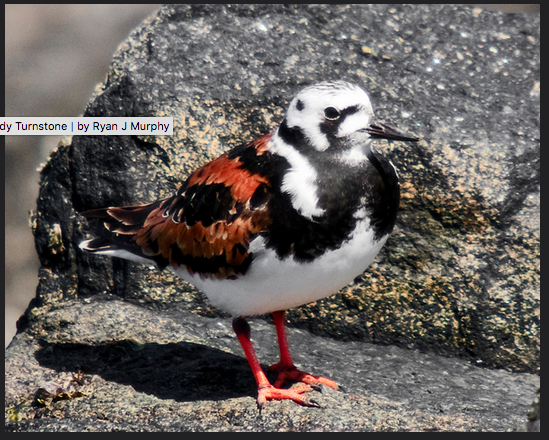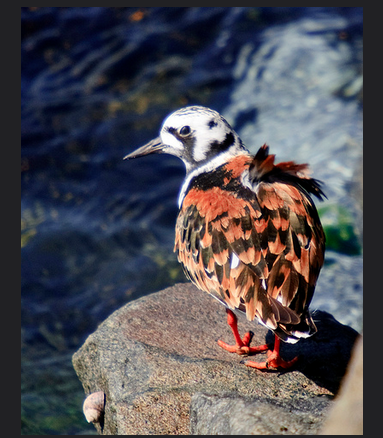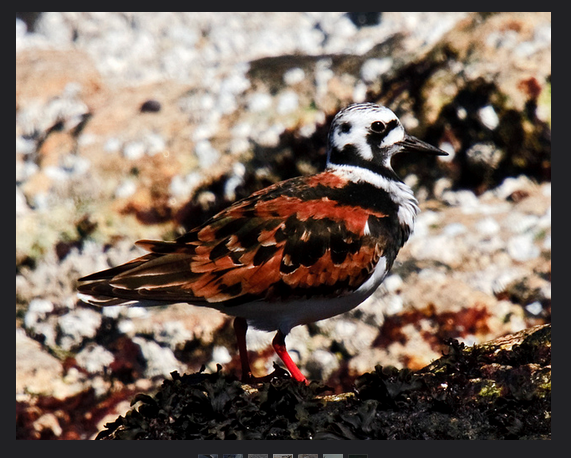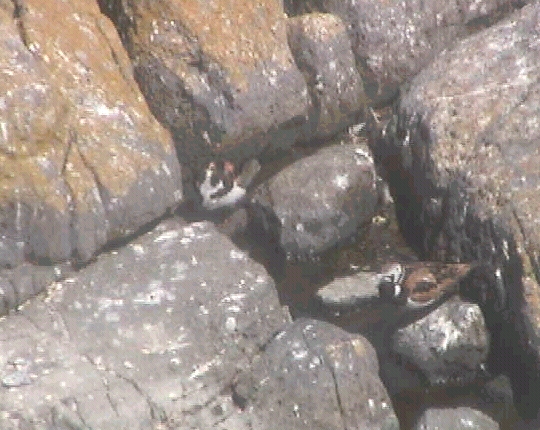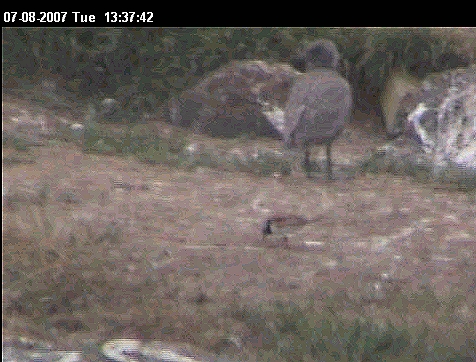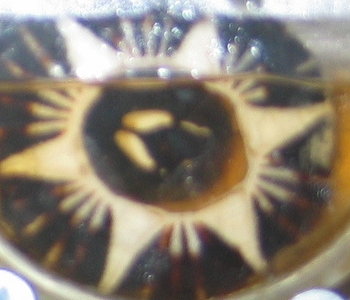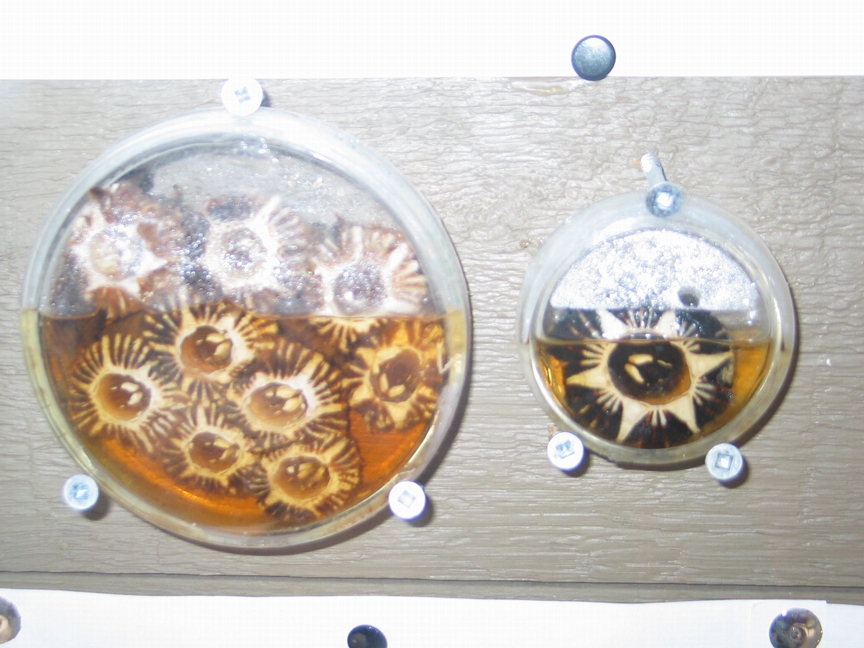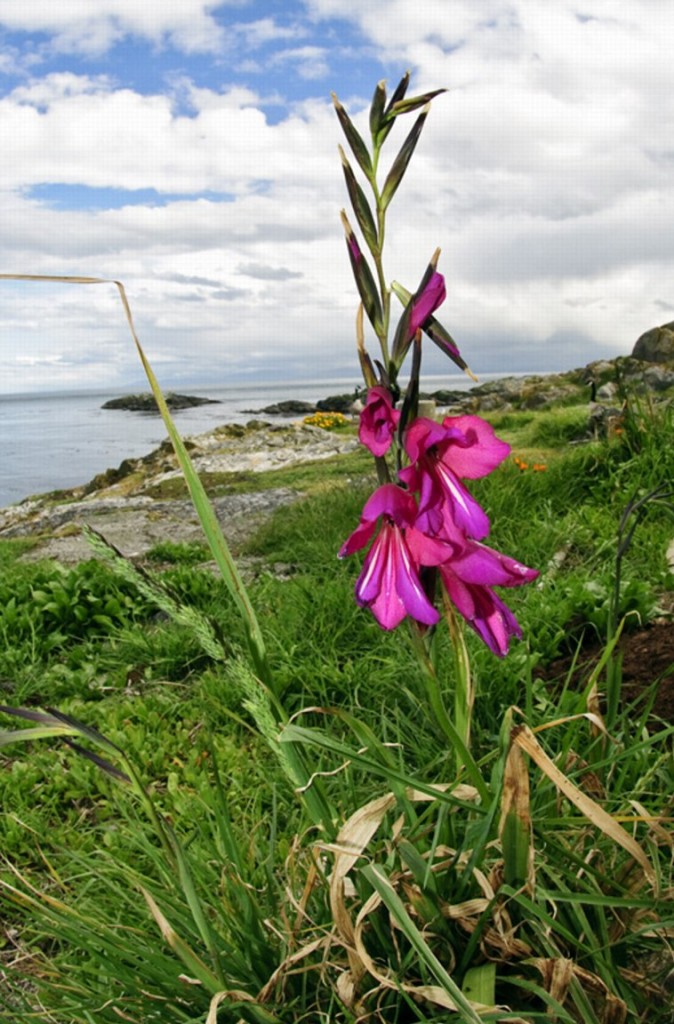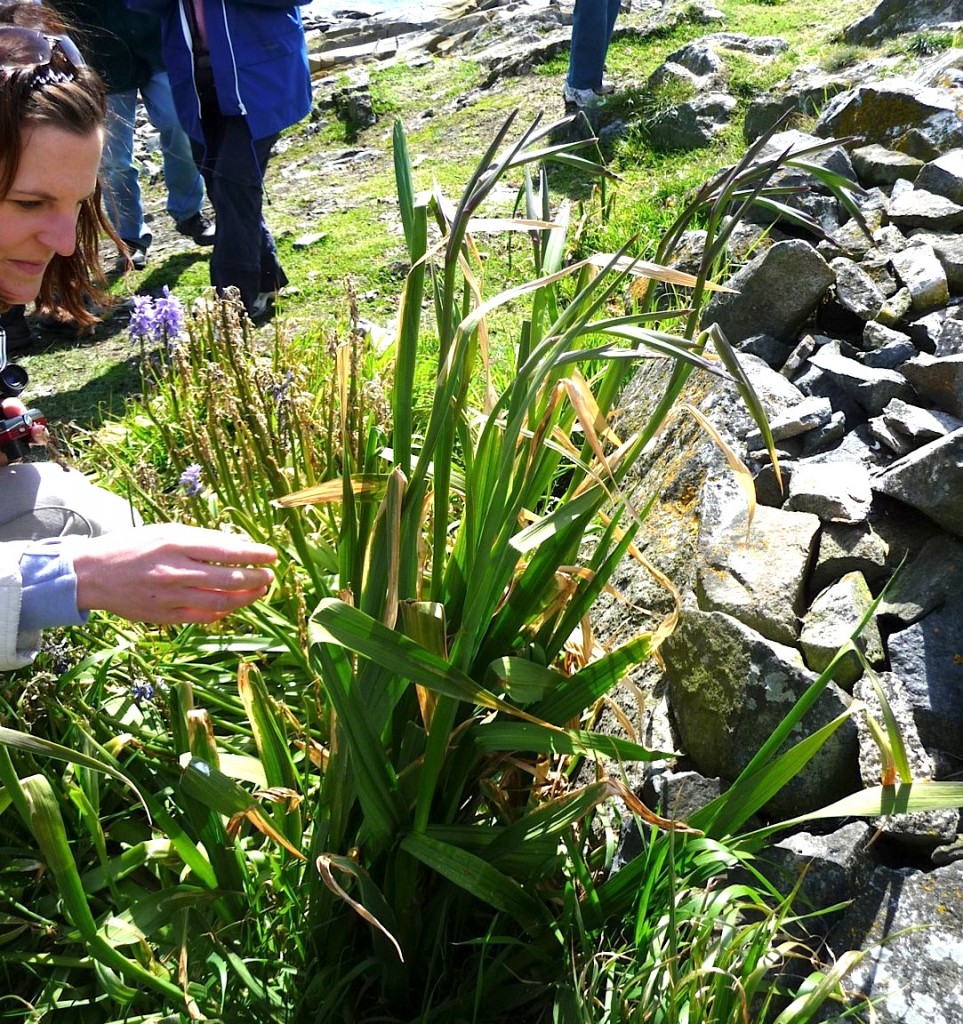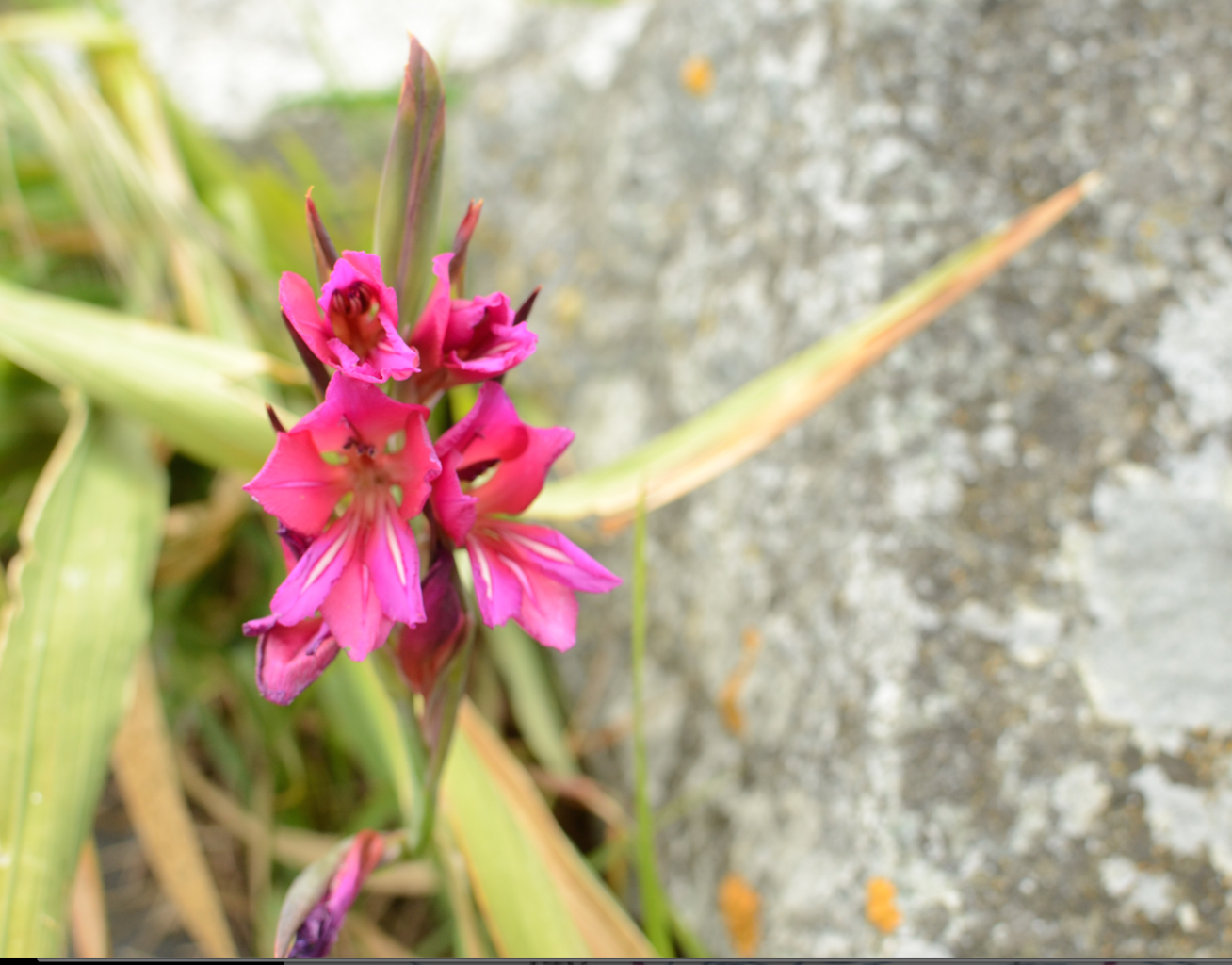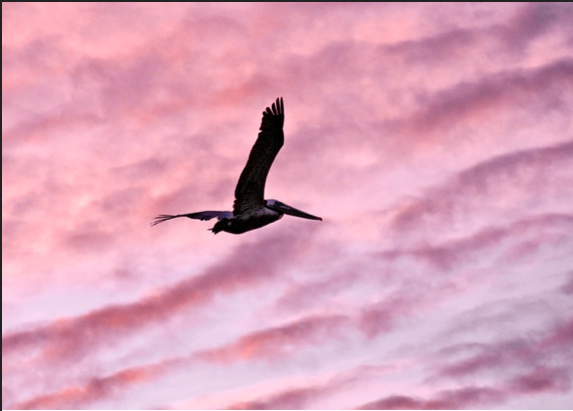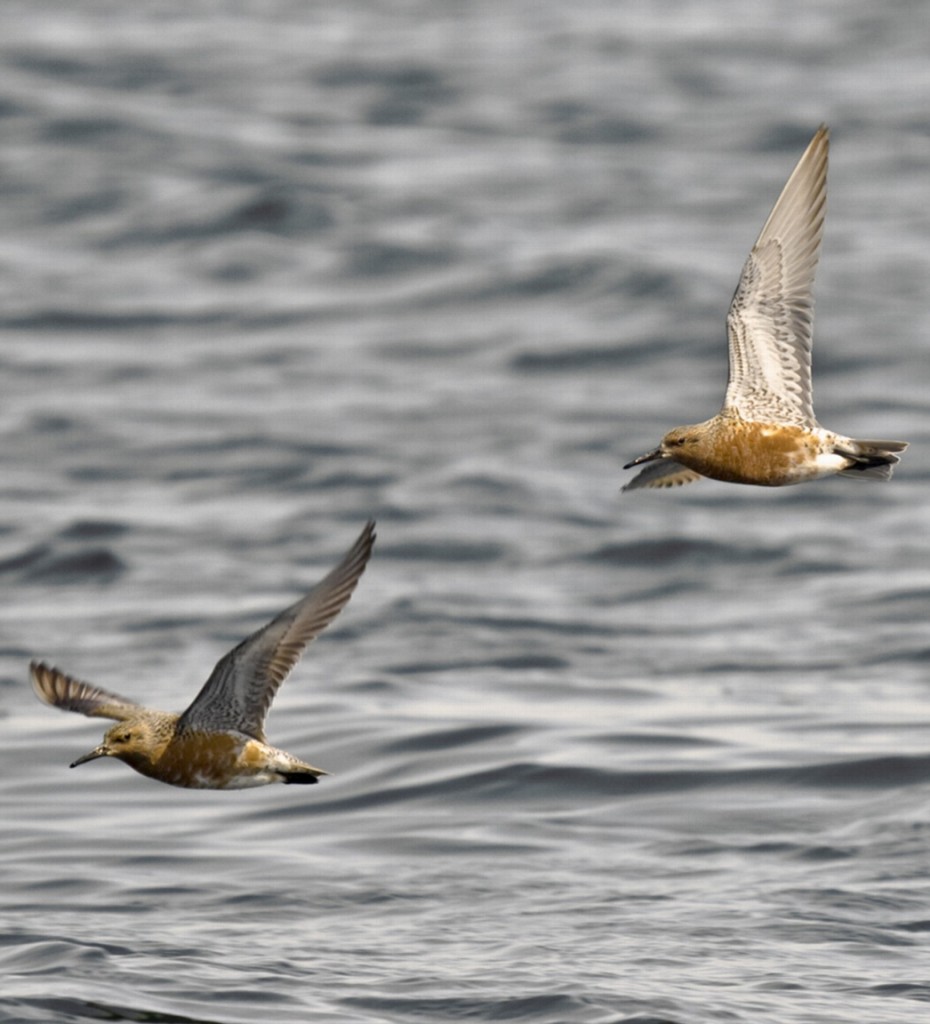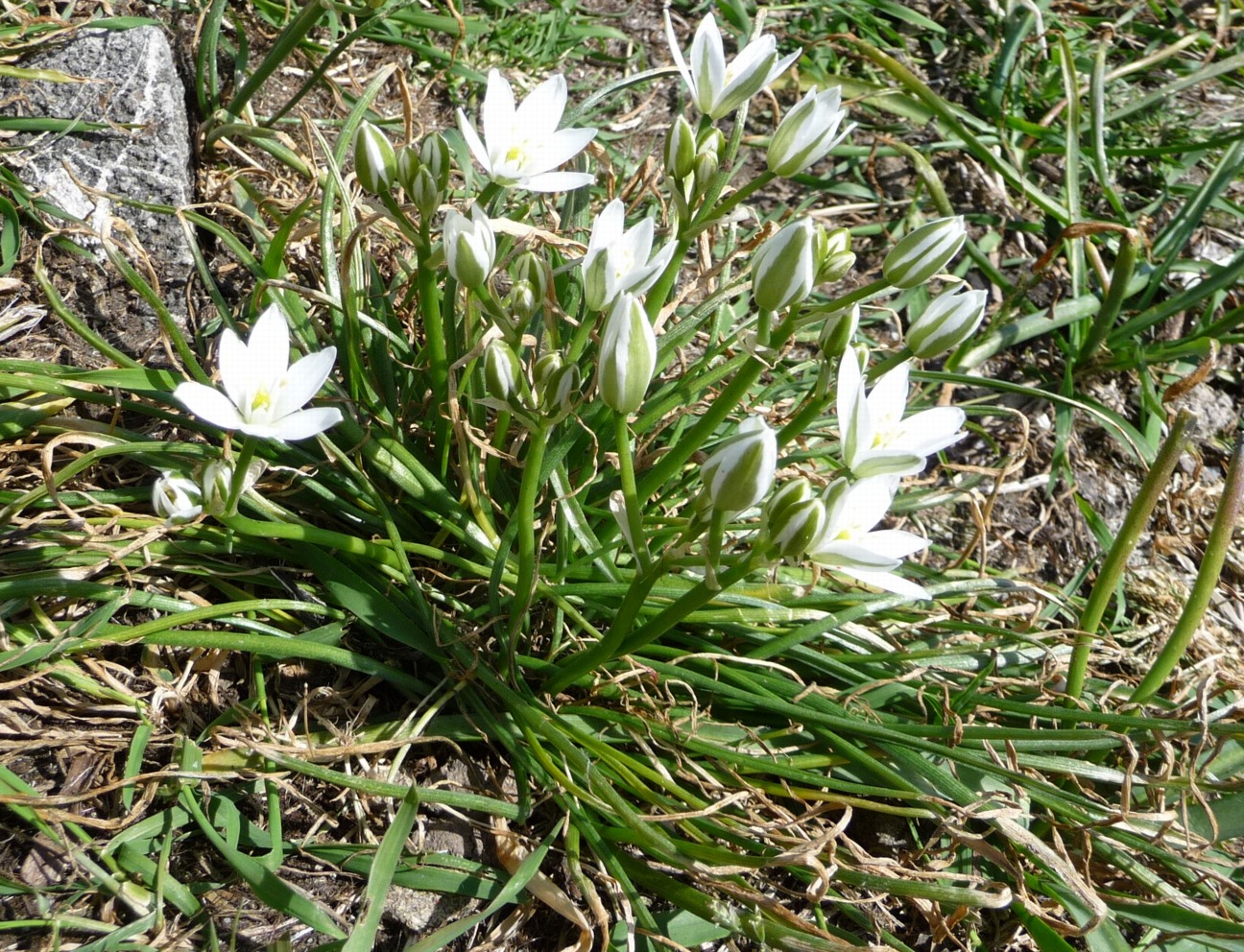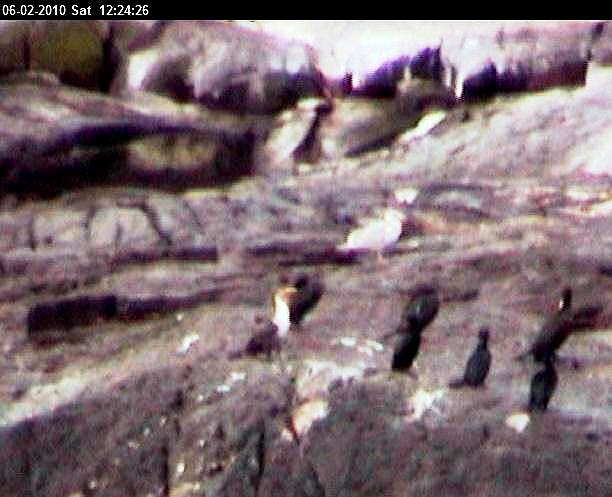Arenaria interpres: Ruddy Turnstone–The Race Rocks Taxonomy
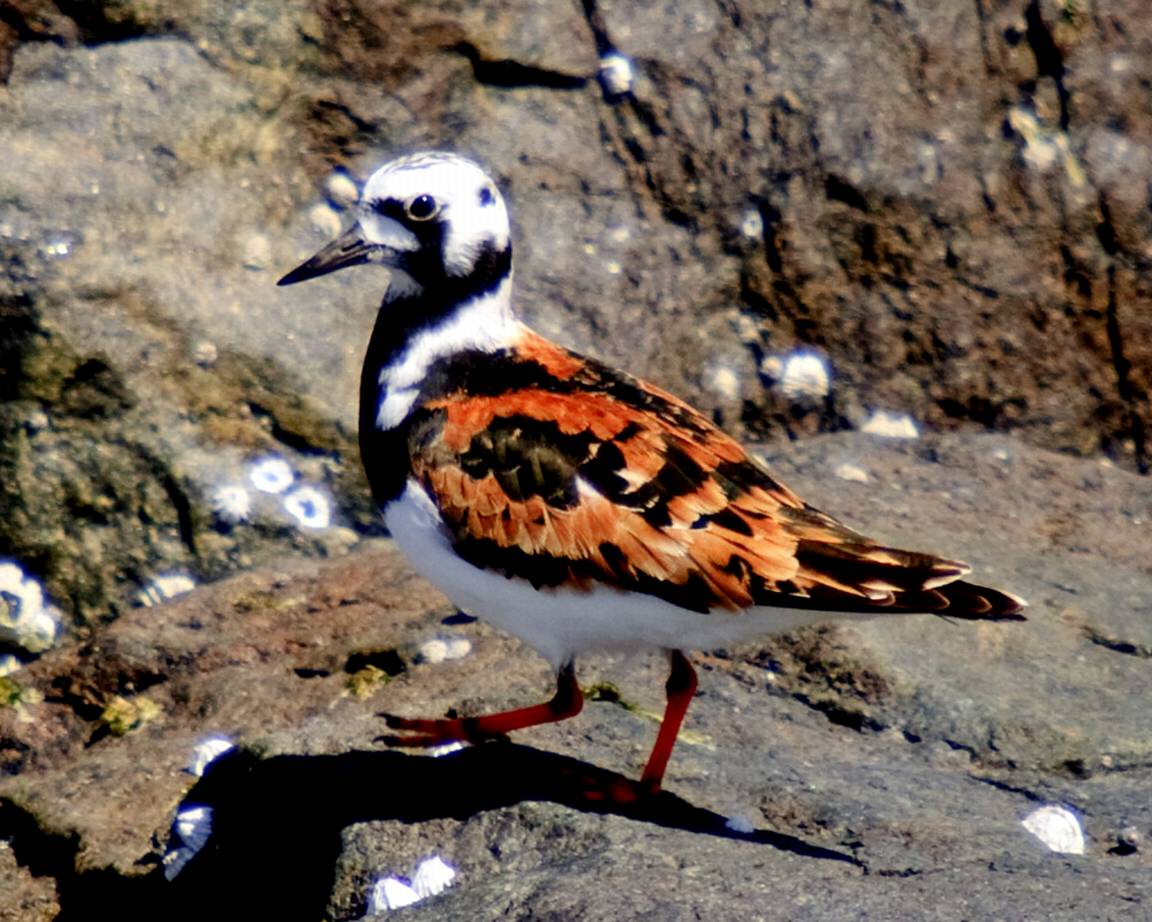
Ruddy Turnstone ,Arenaria interpres -See these photos by Ryan Murphy, May 14, 2010 in his Flickr site.
- Ruddy Turnstone , Arenaria interpres
- Ruddy Turnstone , Arenaria interpres
- Ruddy Turnstone , Arenaria interpres
In this video, the Ruddy Turnstone is seen wandering into the centre of the picture, right near the gulls and the elephant seals.Video from Remote camera 5 by GF.
- This pair of Ruddy Turnstones appeared at Race Rocks in the second week of August, 2007
- Pam Birley took these pictures on camera 5 .
Ruddy Turnstones are an uncommon migrant on southern Vancouver Island (best times in May and again in July-August). Usually between 1-3 (rarely more) get reported at this time at various waterfront sites. No doubt Race Rocks is a reliable site for this species (given that close relative Black Turnstone is so regular out there and the habitat is so suitable). Nevertheless, many local birders miss seeing this species in a given year.
(David Allinson)
The only other record of Ruddy Turnstones at Race Rocks was one individual bird observed recorded and in the Christmas Bird Count, 1978
CLASSIFICATION:
Domain Eukarya
Kingdom Animalia
Phylum Chordata
Subphylum Vertebrata
Class Aves
Order Charadriiformes
Family Scolopacidae
Genus Arenaria
Species interpres
Common Name: Ruddy Turnstone
Other Members of the Class Aves at Race Rocks.
and Image File |
 The Race Rocks taxonomy is a collaborative venture originally started with the Biology and Environmental Systems students of Lester Pearson College UWC. It now also has contributions added by Faculty, Staff, Volunteers and Observers on the remote control webcams. The Race Rocks taxonomy is a collaborative venture originally started with the Biology and Environmental Systems students of Lester Pearson College UWC. It now also has contributions added by Faculty, Staff, Volunteers and Observers on the remote control webcams.G. Fletcher |
.
Cryptolepas rachianecti : Gray whale barnacles-The Race Rocks taxonomy
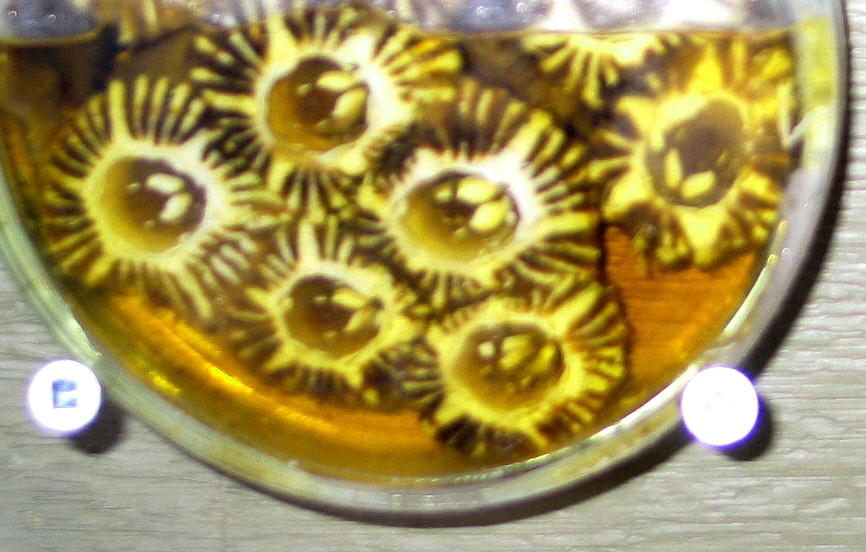
These barnacles were removed from the skin of the Gray Whale which was prepared for a skeleton mount at Lester Pearson College
| Scientific classification |
|
|---|---|
| Kingdom: | Animalia |
| Phylum: | Arthropoda |
| Subphylum: | Crustacea |
| Class: | Maxillopoda |
| Infraclass: | Cirripedia |
| Order: | Sessilia |
| Suborder: | Balanomorpha |
| Superfamily: | Coronuloidea |
| Family: | Coronulidae Leach, 1817 |
| Subfamily:
Genus : |
Coronulinae Leach, 1817
|
- a single barnacle
- display with the whale skeleton
|
Other Members of the Phylum Arthropoda at Race Rocks.
|
and Image File |
 The Race Rocks taxonomy is a collaborative venture originally started with the Biology and Environmental Systems students of Lester Pearson College UWC. It now also has contributions added by Faculty, Staff, Volunteers and Observers on the remote control webcams. March 152006- Garry Fletcher The Race Rocks taxonomy is a collaborative venture originally started with the Biology and Environmental Systems students of Lester Pearson College UWC. It now also has contributions added by Faculty, Staff, Volunteers and Observers on the remote control webcams. March 152006- Garry Fletcher |
Gladiolus imbricatus: Turkish marsh gladiolus
Gladiolus imbricatus in bloom: Originally from south-eastern Europe/Turkey, it was introduced in the garden of an early lightkeeper and has been growing unattended here for over 50 years.
- Gladiolus imbricatus It is not yet in bloom in this picture, but several clumps grow in late May on the east side of the main residence.
- Ecoguardian Anne Stewart took this picture on May 16, 2015
Kingdom: Plantae
(unranked): Angiosperms
(unranked): Monocots
Order: Asparagales
Family: Iridaceae
Subfamily: Ixioideae
Tribe: Ixieae
Genus: Gladiolus
Species: imbricatus
Other Angiosperms at Race Rocks.
and Image File |
 The Race Rocks taxonomy is a collaborative venture originally started with the Biology and Environmental Systems students of Lester Pearson College UWC. It now also has contributions added by Faculty, Staff, Volunteers and Observers on the remote control webcams. The Race Rocks taxonomy is a collaborative venture originally started with the Biology and Environmental Systems students of Lester Pearson College UWC. It now also has contributions added by Faculty, Staff, Volunteers and Observers on the remote control webcams. |
Terms of Reference on DFO website May 2010
Race Rocks Public Advisory Board
Terms of Reference
Introduction:
Section 35 (1) of the Oceans Act provides the authority for the designation of Marine Protected Areas (MPAs). An MPA may only be established for one or more of the following reasons.
The conservation and protection of:
- Commercial and non-commercial fisheries, including marine mammals and their habitats;
- Endangered or threatened species and their habitats;
- Unique habitats;
- Marine areas of high biodiversity or biological productivity; or
- Any other marine resource of habitat as is necessary to fulfill the mandate of the Minister of Fisheries and Oceans.
DFO is considering designating the Race Rocks marine area as an MPA for a number of reasons:
- As a transition zone between the Pacific Ocean and coastal waters, the area is renowned for its exceptional diversity of marine life.
- It is an area of high biodiversity and biological productivity.
- It is important habitat for marine mammals and the area provides habitat for threatened species.
The area has cultural significance to local First Nations. There is recognition that, should a Marine Protected Area (MPA) be established, the Government of Canada as represented by DFO will work cooperatively with the First Nations in the care and management of the MPA towards a common vision for the MPA.
The Race Rocks group of islets and submerged land was designated as an Ecological Reserve in 1980 under the province of British Columbia’s legislative authority. A cooperative management relationship with the Province has been developed with Lester B. Pearson College of the Pacific. DFO and BC Parks, in collaboration with First Nations, stakeholders and the public, are aiming to develop further management strategies to support conservation objectives for the area. To aid in this purpose the Race Rocks Public Advisory Board (RRPAB) has been convened with representation from a number of stakeholder groups and levels of government.
Purpose:
The purpose of the RRPAB is to provide advice to DFO regarding a Marine Protected Area designation under Canada’s Oceans Act at Race Rocks. These Terms of Reference have been developed to clarify the objectives, role and conduct of the RRPAB and its role in the consultation process for the consideration of Race Rocks as a MPA.
Once Race Rocks has been designated as an MPA the RRPAB will be disbanded. A post-designation advisory body will be established to provide advice to DFO on management of the Race Rocks MPA. A new Terms of Reference will be developed for the post-designation management advisory body.
Objectives:
The Objectives of the RRPAB are:
Provide a process for parties to exchange views and provide advice to DFO regarding the establishment of the MPA.
Ensure effective engagement from key stakeholders and community members on planning of the MPA.
Participation, Roles and Responsibilities:
In order to achieve its objectives, the RRPAB will perform the following tasks
- provide a forum for consultation and deliberation to develop consensus-based advice to DFO. Such consensus advice shall represent the collective and individual views of the RRPAB members and the constituencies they represent.
- delineate geographical boundaries of the proposed MPA to achieve its objectives
- collate, analyze and summarize feedback from consultations
provide advice to DFO on the issues and activities that may have an impact on the ecological components of the proposed MPA
- ensure community involvement in the establishment of the proposed MPA
Participants:
The Race Rocks area is of interest to a wide range of constituents representing a broad spectrum of activities. The RRPAB represents a cross-section of interest groups and activities. The RRPAB shall be comprised of, but not limited to, representatives from the following groups:
Fisheries and Oceans Canada
BC Parks
Parks Canada Agency
First Nations
Department of National Defence
Lester B. Pearson College
Education/Outreach Community
Recreational Fisheries
Marine Wildlife Viewing
Research Community
Recreational Diving
Environmental Non-Government Organisations (ENGO)
Recreational Boating
Conservation Stewardship
All representatives must identify a lead participant and alternate. If a participant is unable to attend a scheduled RRPAB meeting, they may invite an alternate from their constituency. Participants are encouraged to invite other members of their groups to attend RRPAB meetings, with prior notification to DFO and subject to space limitations.
DFO may consider additional RRPAB members by written request from interested participants. All RRPAB members must agree to adhere to these terms of reference.
Roles and Responsibilities of Advisory Board Participants:
The RRPAB shall act solely as an advisory body to DFO. Nothing in these terms of reference constitutes authority to perform operational or management functions, or to represent or make decisions on behalf of DFO.
Participants on the RRPAB will:
- openly provide information on their activities and the activities of the constituents they represent within and surrounding Race Rocks
- actively participate in discussions
- encourage all participants to contribute to discussion equally
- offer respect for different viewpoints and attention when others are speaking
- ask questions for clarification and mutual understanding
- verify assumptions
- deal with differences as issues to be discussed, not positions to be defended
- refrain from distracting others through side conversations, cell phones off
- make a best faith effort to work toward an agreement at the table
- wherever possible ensure that agreements developed are acceptable to the organizations, agencies or constituents that the participant represents
- maintain dialogue with constituencies regarding the activities and discussions of the RRPAB
- refer media contacts regarding the activities of the RRPAB to DFO.
Roles and Responsibilities of DFO:
DFO supports the sharing of information and dialogue from the consultative process. Representatives from DFO on the RRPAB will endeavour to fairly represent the recommendations developed by the RRPAB. DFO will review the recommendations of the RRPAB, and take into account those recommendations when considering designation of the Race Rocks MPA. DFO will endeavour to engage other departments and levels of government as appropriate to adequately consider the recommendations of the RRPAB, including BC Parks in relation to their jurisdiction related to the Race Rocks Ecological Reserve.
Process for Formulating Recommendations:
Recommendations by the RRPAB will be made to DFO through a consensus-based process. The intent of this process is to provide the opportunity for all parties to participate in a manner which responds to their interests. Whenever possible, recommendations will be supported by consensus as opposed to being unilaterally imposed.
Consensus shall mean the “general agreement of all participants on a package of recommendations” and shall embody the following concepts:
Consensus does not mean total concurrence on every aspect of a recommendation, but all participants must be willing to accept the overall decision package.
If a participant withholds agreement on an issue(s), that participant is responsible for explaining how their interests are adversely affected and/or how the proposed agreement fails to meet their interests. The participant withholding consensus must propose alternatives and the RRPAB must consider the proposed alternative towards considering how all interests may be met.
Once consensus is reached on the overall package of advice, it is assumed to be binding.
If consensus is not achieved through this process, the differing recommendations will be noted in the final recommendations package, clearly identifying the levels of associated support.
Meetings:
Meetings will be held bimonthly to assess and evaluate RRPAB’s activities and input. Dates and locations of meetings will be determined by polls of RRPAB members, to identify the time and place that works best for the majority.
DFO will be responsible for arranging and providing appropriate resources for meetings. Meeting arrangements will include opportunity for RRPAB members to propose meeting agenda items for topics relevant to the RRPAB.
Meeting records will reflect all views and input discussed along with the final recommendation. In the event of a non-consensus recommendation, the record will include dissenting opinions and the rationale.
Deliverables:
The RRPAB will provide recommendations to DFO related to the designation of the MPA.
Timeline:
It is expected that the RRPAB, as outlined by these terms of reference, will complete the objectives described in 2011.
Oystercatcher’s territory
‘Elephant Seal’, 5, ‘Fewer females are visible on Middle Rocks. The tagged female has returned to Great Race Island despite having completed her moult. The larger females on Middle Rocks are in various stages of their moults.’, ‘Ryan’, ’20:56:43 ,
-93, ‘2010-05-12’,
‘The diversity of bird life continues to increase with the appearance of
Dunlins, Brandts and Pacific Loons today.
Small groups of Brandts flew West throughout the day, followed by several large flocks numbering up to 100 birds in the evening.
A mature Brown pelican roosted here for the night, much to the gulls ” dissatisfaction.
There are still 2 pairs of Harlequin ducks spending their days around Great Race Island, plus
4 Whimbrels were again seen on the SW corner of the island where up to
3 Black Oystercatcher pairs have staked nesting territories. There are a total of
7 pairs of Oystercatchers with territories on the island, but only 2 confirmed nests so far, and of those only one nest with 2 eggs at the moment. Could be a bumper year as a maximum of 5 breeding Oystercatcher pairs have been recorded in the past. ‘,
‘Northern Sea Lion’, 10, ‘The numbers of Northern Sea Lions have been down the past several days, however they are still finding food in the reserve. A commotion right above the tidal turbine today attracted a number of gulls, and I could soon see a Northern sea lion was thrashing a large fish on the surface. Reviewing my photos it turns out the sea lion had captured a wolf eel! Long tasty filets on those protected fish, I can ”t say I ”m not envious!’,
‘Ryan’, ’21:10:38 ,
Calidris canutus: Red Knot- The Race Rocks Taxonomy
This shorebird which is listed by COSEWIC as a Species at Risk has a long distance migratory route of 20,000 miles. It nests on the Canadian Tundra and uses both the Atlantic and Pacific flyways. It has made almost annual stop-overs at Race Rocks Ecological Reserve in the month of May last few years. It was first photographed there by Ecoguardian Raisa Mirza in May of 2010. You can see her other photos on her Flickr site.
- Red Knot photo by Raisa Mirza
- Red Knot photo by Raisa Mirza
Domain: Eukarya
Kingdom :Animalia
Phylum: Chordata
Subphylum: Vertebrata
Class :Aves
Order :Charadriiformes
Family: Scolopacidae
Genus :Calidris
Species :canutus
Common Name: Red Knot
See other posts tagged with Red Knot
Other Members of the Class Aves at Race Rocks.
and Image File |
 The Race Rocks taxonomy is a collaborative venture originally started with the Biology and Environmental Systems students of Lester Pearson College UWC. It now also has contributions added by Faculty, Staff, Volunteers and Observers on the remote control webcams. The Race Rocks taxonomy is a collaborative venture originally started with the Biology and Environmental Systems students of Lester Pearson College UWC. It now also has contributions added by Faculty, Staff, Volunteers and Observers on the remote control webcams. |
Diversity of Bird Life
‘The diversity of bird life has increased greatly with the improving weather this week. Rock sandpipers, Western sandpipers, Red Knots, and Greater Yellowlegs have all been seen in the intertidal zone. Yesterday evening a juvenile brown pelican spent a number of hours on Great Race before heading towards Port Angeles just after sunset. Today around noon a peregrine falcon zipped by Great Race and scared most of the small bird species away for the day. The Black Oystercatchers are becoming very territorial with one another, and the nest above the cove on the E side of Great Race now has 2 eggs.’, ‘Ryan’, ’17:42:48 ,
Mammal census:
‘Elephant Seal’, 8, ‘8 females remain on Middle Rocks, still in various stages of their moults. The tagged female X201/X202 recently left Great Race Island after completing her moult, but was photographed yesterday on Middle Rocks with the other females. This year is a pattern reversal compared to last year when it was the sub-adult male -Misery) who completed his moult on Great Race and few if any female elephant seals were seen here during this time.’, ‘Ryan’, ’17:45:02 ,
Triteleia hyacinthina: White brodiaea–The Race Rocks Taxonomy
Triteleia hyacinthina, the white brodiaea, or fool’s onion is a native of the Pacific west coast of North America. These ones grow just east of the tower.10 metres.
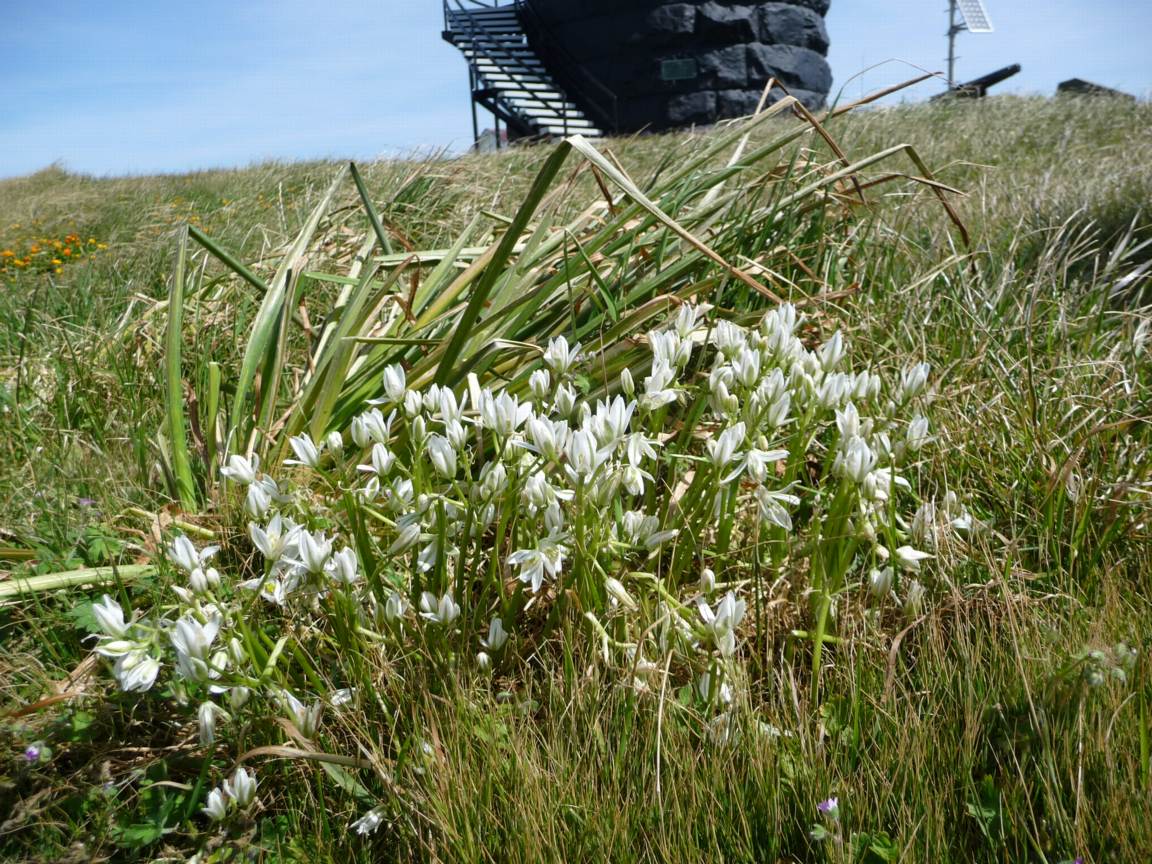 Due to a late spring storm from the southeast three weeks ago, many of the early blooming plants show some effects of salt spray. Photos by Garry Fletcher May 9, 2010.
Due to a late spring storm from the southeast three weeks ago, many of the early blooming plants show some effects of salt spray. Photos by Garry Fletcher May 9, 2010.
Domain Eukarya
Kingdom Plantae
Superdivision Spermatophyta
DivisionMagnoliophyta
Class Liliopsida
SubclassLiliidae
Order Liliales
Family Lilaceae
Genus Triteleia
Species hyacinthina
(Lindl.)Greene
Common Name: White brodiaea, fools onion
| Other Members of the Angiosperm at Race Rocks |
and Image File |
 The Race Rocks taxonomy is a collaborative venture originally started with the Biology and Environmental Systems students of Lester Pearson College UWC. It now also has contributions added by Faculty, Staff, Volunteers and Observers on the remote control webcams. The Race Rocks taxonomy is a collaborative venture originally started with the Biology and Environmental Systems students of Lester Pearson College UWC. It now also has contributions added by Faculty, Staff, Volunteers and Observers on the remote control webcams.
Garry Fletcher |
Phoebastria immutabilis: laysan albatross–The Race Rocks Taxonomy
Pam Birley took this photo using the remote cam 5 on February 6, 2010. We have had difficulty identifying it but it looks quite like a Laysan Albatross. Below is a quote from Pam:
“Thought I would draw your attention to this mystery bird, seen on Middle Rock on Saturday. I was actually looking at the seals but this large bird caught my eye because it was so white. I wish I had taken more pictures but only saved this one. It was larger than the Cormorants (Beside it in the photograph) and had a big yellow/orange beak. It was white except for the wing area which was black. It was not a double-crested Cormorant. The only thing I can come up with from Sibley and consulting the internet is a Laysan Albatross. Apparently they only breed in the Hawaiian Islands area but do travel up to the Bering Sea, Alaska and the Pacific NW.”
This article details the ecological issues threatening this bird such as bycatch in the commercial high seas drift net fisheries.
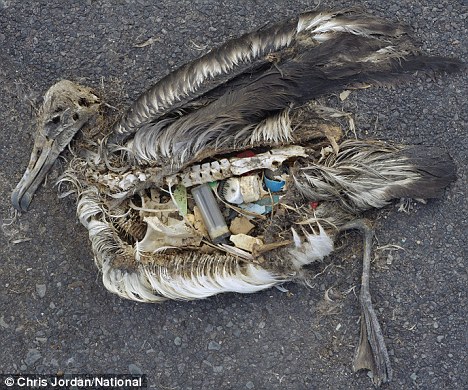 See this article ” How we killed paradise with plastic: Grotesque consequences of our casual throwaway culture” The image from it shown here provides a stark reminder of the tragedy of plastic pollution in the ocean.
See this article ” How we killed paradise with plastic: Grotesque consequences of our casual throwaway culture” The image from it shown here provides a stark reminder of the tragedy of plastic pollution in the ocean.
Domain Eukarya
Kingdom Animalia
Phylum Chordata
Subphylum Vertebrata
Class Aves
Order Procellariiformes
Family Diomedeidae
Genus Phoebastria
Species mutabilis
Common Name: Laysan albatross
| Other Members of the Class Aves at Race Rocks |
and Image File |
 The Race Rocks taxonomy is a collaborative venture originally started with the Biology and Environmental Systems students of Lester Pearson College UWC. It now also has contributions added by Faculty, Staff, Volunteers and Observers on the remote control webcams. Pam Birley, 2010 The Race Rocks taxonomy is a collaborative venture originally started with the Biology and Environmental Systems students of Lester Pearson College UWC. It now also has contributions added by Faculty, Staff, Volunteers and Observers on the remote control webcams. Pam Birley, 2010
|

